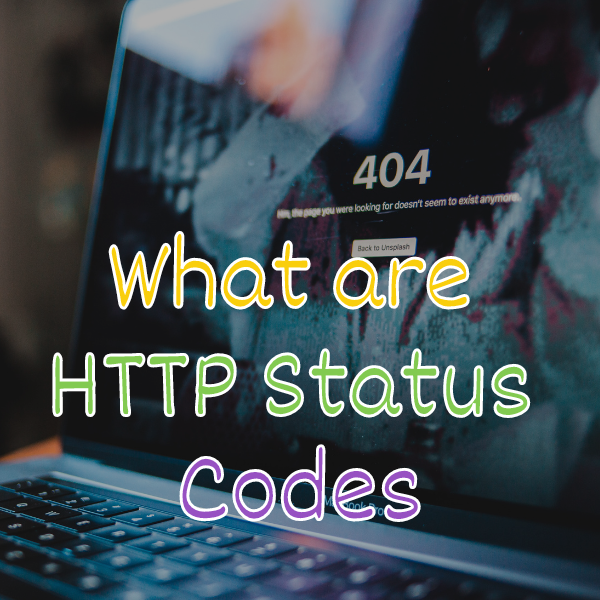Introduction
Mastering strategic tools for online visibility is important. One tool that can significantly impact your website’s reach is domain forwarding. Whether you’re rebranding, consolidating your online presence, or aiming for a seamless user experience, understanding how to forward domains effectively is a skill that can elevate your website traffic game.
If you’re struggling with managing multiple domains across your business, in this lesson, we’re learning all about forwarding domains. That way, different websites can go to the same place, and you can handle your old domains, help people find you on the web, maximize your SEO, and even block competitors.
In this lesson, we’re learning all about forwarding domains. We’ll learn what it is, why to forward, how to forward, and then we’ll go over an example. Finally, we’ll summarize all our top tips.
Challenges online course creators can face if they don’t forward their domains:
- Without domain forwarding, learners may struggle to find your course online, leading to confusion and potential loss of participants.
- Your brand presence might scatter across different web addresses, making it harder for students to identify and remember your platform.
- It can impact your search engine rankings, affecting the discoverability of your online courses.
- Competitors might exploit similar web addresses, diverting potential learners from your courses.
- Missed marketing opportunities, as promotional efforts may not reach the intended audience due to fragmented online presence.
Video Lesson – How To Handle Your Domains and Help People Find You On The Web
Who Can Use Forward Domains for More Traffic?
Almost any kind of teacher or professional can use domain forwarding for more traffic and to seamlessly integrate their online courses into their existing online presence.
- To create a cohesive brand presence, directing their audience seamlessly from the blog to the online courses, enhancing brand recognition.
- To integrate their portfolio and online courses under one domain, providing clients with a streamlined experience to explore both visual work and educational offerings.
- To build a robust author platform, linking articles and journalism work with educational content, creating a comprehensive online presence.
This can work for a wide range of professionals like graphic designers, bloggers, and journalists.
What Is It?
A domain is a web address, the name of a service that you type into your browser and then go somewhere. That somewhere is like a computer. It could be your course, your community, or your coaching website. That computer has an address, just like a home address—123 Main Street. But, you look up a name in the old-school Yellow Pages, on Google, or from some ad. That name is your website’s business, and that’s the domain. The domain essentially maps names to computer IP addresses.
If you have it right, maybe your main website, something.com, is a name. It maps to a computer website, like some WordPress hosting websites. What we’re going to talk about today is forwarding domains. So, what is this concept of forwarding a domain?
You can configure more than one website to point to another server. You can have a few websites that point to one computer, one server, and one service. In some cases, you may have one address that points to a server, and you may want to have a second address—an old address forward, just like mail forwarding. You may want to have one or more addresses point to a particular server, and that’s what we will discuss today.
Why Use It?
The usefulness of domain forwarding lies in the various cases where you might need more than one address pointing to a specific server, let’s say, your course server. The significance here is that you might want old names, new names, alternative names—all forwarding to the same place, the same server.

Why Forward Your Domain
Having an Old Domain
One of the first reasons why you might want to forward your domain is if you have an old domain. When you initially started your company, you came up with this name, and over time, you evolved that name. You don’t want to support two different websites; you want to take your old domain and have it forward to your new domain. Your old “whatever it was” .com to your new latest .com—having these two names pointing to the same server. That’s the very first reason you might want to opt for it.
Connecting Different Businesses
The following reason you might want to forward domains is if you have different businesses. You may have a container business overseeing all your businesses, and you might want to have one specific sub-business.
Sometimes, they’re just other names, but they all go to the same place. If that’s the case, you may have your overarching company name point to the same place as your main product or primary service name. Essentially, you end up with these two names pointing to the same server.
Singular/Plural Versions
Another reason you might want to forward your domain is if you have a singular or plural version of your business name or service name. Perhaps you’re catering to authors but also want to capture the author. So, your brand is “Something, Something Authors,” and you also want to catch “Something, Something Author.com.”
In this case, you end up with two domains. You go and buy that second domain on GoDaddy or wherever. Then, you have two names and two addresses, but they both point to the same place. One is your main website with the official name, and the other is the singular, plural version.
Spelling, Sounds Like, Dashes
The same thing can happen for spelling, similar words, or comments with dashes in the middle. For example, your leading brand may be frequently mistyped or misspelled, or it has an unusual spelling challenge for those who don’t speak your native language. Alternatively, you might have initially thought your brand had two words with a dash, but later, you combined it without it. For all these cases, you would buy alternative domains to handle those variations and have them forwarded to your primary address.
Competitor Moat or Synonyms
Another reason to forward domains is to protect yourself from competitors, essentially building a moat around you. This helps shield against future businesses entering your space. Suppose you have a course on architecture, like “Something Architecture Helpers” or “Something Architecture Designers.” Over time, you may decide to protect your business with variations like “Something Architecture Advisors,” “Something Architecture Consultants,” or “Something, Something Architecture Courses.” Essentially, you’re expanding and covering different variants that could potentially come into your market share in the future.
Preserve SEO Value
Another reason to forward your domain is to preserve SEO value. You started with a domain and ran that business for a few years. You have blog articles, backlinks, and all this other SEO juice that Google loves and knows about you. When you forward your domain correctly, instead of just redirecting with a web link, you get all that original SEO juice forwarded to your next domain.
So, the second company, that second domain, is going to get all the Google search love that you’ve earned on that first domain with all the hard work. Therefore, forwarding gives you all those SEO benefits.
Support Cold Email Addresses
Depending on the type of company you run, you may also use cold email addresses to reach out to certain people. When you use cold email, you often use other domains, related domains, or similar domains. You’re going to want those other domains also to forward. It’s not just an email address; if someone were to check and look up that email address, you want it going to your main website, your main course, your main community, and your landing page.
As you use cold email outreach to expand your audience, reach, and sales, you also want to ensure those domains are forwarded to your main service.
Expand Large/Complex System
Finally, as you expand your business and your system, and it gets more and more complicated, it might make sense to break up your business into parts. For example, let’s say you have a community for writers. Over time, this community has a help page, an about us page, or something else.
Or let’s say you have a community for set designers—Broadway, theater, movies. You have the set designer community, and everybody’s talking there.
Over time, you discover that you need many help topics outside of your community. So, you already have your main sales page and your community, potentially a subdomain or a separate domain where you access the community. However, you find yourself having all these resources and documents outside of your community. Sometimes, it might make sense to have help.thenameofyourcommunity.com or help.com, whatever your community name is.
You’re breaking out all the help, building another website with topics, FAQs, a search engine, and different resources for your community. It didn’t make sense to combine it; maybe it wasn’t part of your community platform. So, you build a separate island. In those cases, when people click on that help, you’re sending them to this other place, this other thing—an island of information that has all the support for that community.
This is just one example. But as systems get larger, you break out those components. As systems get larger, you may break out those islands of services, information, etc.
How To Forward Your Domain
Go to Your DNS Registry Settings
Remember, your domain is part of your hosting plan, and in there, you might have some DNS (Domain Name System) entries.
Toggle Forwarding
You’re going to look up your domain there and see various options. One of those options is to toggle forwarding.
Specify Destination URL
The first thing you’ll do is specify where you want this domain to go; you’ll identify a destination URL.
Specify a Protocol like HTTPS://
Next, when visitors go to this first place, and you want them to go to another site, specify the protocol. The protocol is how things communicate. There are two standard protocols: HTTP and HTTPS. The ‘S’ stands for secure, providing confidence to your customers and sending positive signals to Google. It ensures a secure connection, indicated by a lock icon.
Specify 301/302
Depending on your hosting system, there are at least two options for forwarding. The first one is code 301, indicating permanence. “Hey, this is permanent; I’m not building anything here.” A 301 redirect ensures that, from now on, visitors always go to the new website. It also carries over the old SEO juice from the prior website. It’s a permanent signal to the browser and Google: “All that old stuff, go to this new place. That’s where the new stuff is located.”
302 = Temporary (e.g., Maint.)
The other option is a 302, which is a temporary forward. This might be used for maintenance. For example, “Hey, for the next week, I need you to forward to this other website.” Perhaps the first website is fully loaded and broken, or there’s an issue with the server or network. Something’s happening, and you need to redirect to another website temporarily.
Most of the time, for domain forwarding, you’re going to use permanent; you’re going to use permanent. If you need to change it in six months, that’s okay. You can do that. Set it as permanent, and browsers and Google will recognize and remember it. They’ll use it quickly to go to the following website. The systems will know how to handle the updated website.
Wait for DNS Propagation
Once you finally configure and save that DNS record, you must wait for DNS propagation. So, your hosting will inform all the other hosting providers, DNS systems, and Yellow Pages. It will let them know, “Hey when you’re looking for somethingsomething.com, go to this other place.” Over the next 24 hours, they’ll all update each other. Every Internet service provider worldwide will have its DNS updated with information for your website.

Example: How to Configure Domain Forwarding
Let’s explore an example illustrating how to configure domain forwarding for specific business use cases.
Identify Domain Variants Based on Business Needs
Imagine you begin with the domain “yophatbeatz.com,” aiming to teach hip-hop music, including drum lessons and beat creation. However, as your business grows, you realize people are searching for variants like “beats” with an ‘S’ or ‘fat,’ instead of ‘phat,’ creating a disconnect. To address this, you buy additional domain variations based on feedback and search trends.
Set Up Domain Forwarding for Variants
Once you’ve acquired these additional domains, the next step is to set up domain forwarding for each variant. Navigate to the DNS settings of each domain and forward the individual records to your main website, “yophatbeatz.com.” This ensures that users searching for different variations are seamlessly redirected to your primary online presence.
Optimize Forwarding for SEO Impact
To optimize this process, specify a permanent redirect for each variant domain. This ensures that accidental links or searches get redirected to your primary property, preserving the SEO juice. By strategically configuring domain forwarding, you not only enhance the user experience by preventing ‘not found’ errors but also boost your SEO ranking.
Over time, as the DNS updates and forwards take effect, you’ll witness an increase in traffic, protecting your business from potential competitors and accommodating future brand evolutions.
Frequently Asked Questions About How to Forward Your Domain For More Traffic

Summary – How to Forward Domains for More Traffic
Domains are names that map to computers’ IP addresses, and usually, you have a domain for your main website, like “something something.com.” You use domain forwarding when you have more than one name pointing to the same place, making it super helpful for old domains, different domains, and even blocking competitors.
There are various reasons why you might want to forward domains, and the process is straightforward. Go to your registry, choose each domain you want to forward, update the record to specify where it should go, mention your protocol, state that it’s permanent, save it, and then, after a few hours, anyone visiting the old address will start appearing at the new address. If you encounter any difficulties, tech helpers can assist you effortlessly.
Tips for creative online course creators when using domain forwarding for more traffic to their online courses:
- Use redirects to effortlessly direct additional domain addresses to your main server, expanding your audience and online presence.
- Secure variations of your domain to prevent competitors from capitalizing on similar names, maintaining brand integrity.
- Preserve valuable SEO juice by employing permanent redirects (301) when forwarding domains, ensuring a seamless transition and retaining search engine benefits.
- Improve user experience by forwarding misspelled or alternate versions of your domain, reducing the risk of potential visitors encountering dead ends.
- Capture diverse search preferences by forwarding domains with variations in spelling or terms commonly used by your target audience.
- Implement temporary redirects (302) during maintenance periods to guide visitors to an alternative destination while ensuring continuous online availability.
You should be a little smarter now. Thanks for hanging out!
Please subscribe to get more tips for creative online course teachers.
More Tips For Online Teachers
These lessons can also help you with Marketing, Sales, and Technology:
- Analytics for Teacher Websites
- Build A Teacher Website
- Plan Teacher Website With Coach
- Set Up Teacher Website
- Teacher Website Tech Maintenance










